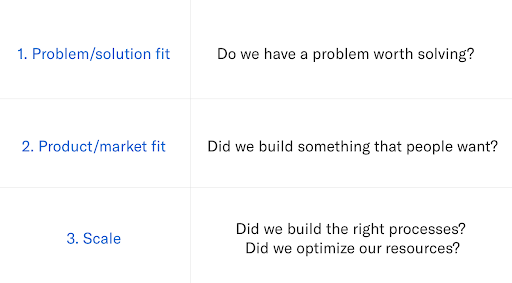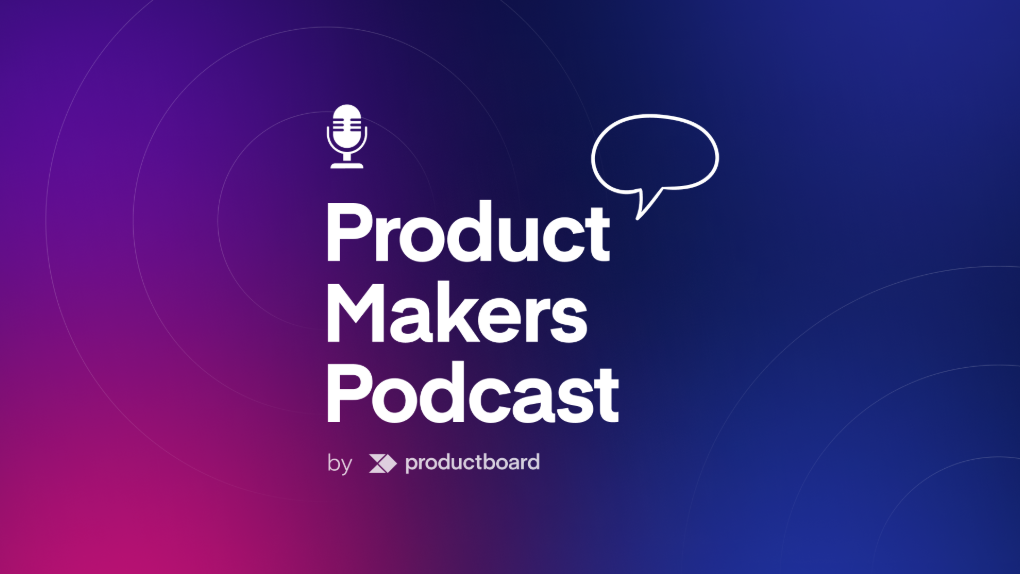What is product/market fit? 5 startup thought leaders weigh in

If you’re like most product managers, you probably struggle with deciding what to build next. With so many competing priorities, it is hard to figure out what features and product initiatives to prioritize.
Getting to product/market fit is the first step on a path that can build traction for your startup.
Product/market fit is a common concept in the product management world. Marc Andreessen, the legendary Silicon Valley entrepreneur, co-founder of the VC firm Andreessen Horowitz and creator of the once-dominant web browser Netscape, is often associated with popularizing the term. In his blog post, “The only thing that matters,” Andreessen describes product/market fit as the moment when a startup successfully finds a set of customers to serve with their product:
“Product/market fit means being in a good market with a product that can satisfy that market.”
Whenever you see a successful startup, you see one that has achieved product/market fit. You can always feel that product/market fit is happening—it leaves no room for doubt.
In his book The Lean Startup, Eric Ries helps us picture what product/market fit looks like:
“When you see a startup that has found a fit with a large market, it’s exhilarating. It is Ford’s Model T flying out of the factory as fast as it could be made, Facebook sweeping college campuses practically overnight, or Lotus taking the business world by storm, selling $54 million worth of Lotus 1-2-3 in its first year of operation”
What is product/market fit?
To better understand what product/market fit is, we’re going to explore how other influential figures in the startup world describe this idea. Here are their definitions of product/market fit, which we will break down in further detail below:
- Product/market fit is identifying a compelling value hypothesis
- Product/market fit is when you build something that people want
- Product/market fit is when you have the right solution to a problem that’s worth solving
- Product/market fit is when users love your product so much they tell other people to use it
- Product/market fit is a massive pull from the market
1. Product/market fit is identifying a compelling value hypothesis
Andy Rachleff, the co-founder of investment firm Wealthfront and Benchmark Capital, first developed the idea of product/market fit:
“When you first start out, the only thing that matters is finding a cohort of customers who truly value what you offer. Growth alone means next to nothing.”
Rachleff believes that startups should determine and test their value hypothesis before they move on to their growth hypothesis.
A value hypothesis answers why a customer is going to use your product:
“A value hypothesis is an attempt to articulate the key assumption that underlies why a customer is likely to use your product. Identifying a compelling value hypothesis is what I call finding product/market fit. A value hypothesis addresses both the features and business model required to entice a customer to buy your product.”
A growth hypothesis is how you’re going to scale your customer base:
“A growth hypothesis represents your best thinking about how you can scale the number of customers attracted to your product or service.”
Rachleff recommends that startups need to validate their value hypothesis before they scale:
“After all, if the dogs don’t want to eat the dog food, then what good is attracting a lot of dogs?”
2. Product/market fit is when you build something that people want
Paul Graham, co-founder and partner at Y-combinator, describes product/market fit as making something that people want.
“Why do so many founders build things no one wants? Because they begin by trying to think of startup ideas. That m.o. is doubly dangerous: it doesn’t merely yield few good ideas; it yields bad ideas that sound plausible enough to fool you into working on them.”
According to Graham, when a startup launches, there should be some people who need the product, not just see the potential benefit of using it. You need users that want to use your product or feature urgently.
When evaluating product/market fit, ask yourself: who wants this right now? Who wants what you’re building so much that they’ll use it even when it’s a scrappy first version with lots of bugs.
In the words of Graham, successful startups are born by identifying startup ideas, not coming up with them:
“The verb you want to be using with respect to startup ideas is not ‘think up’ but ‘notice.’ At YC we call ideas that grow naturally out of the founders’ own experiences “organic” startup ideas. The most successful startups almost all begin this way.”
For many entrepreneurs, Graham’s words imply that you achieve product/market fit organically by identifying needs in the market, instead of by forcing your perspective on users.
3. Product/market fit is when you have the right solution to a problem that’s worth solving
Ash Maurya, author of “Running Lean” and creator of the LeanStack, breaks the startup lifecycle into three stages:
- Problem/Solution Fit
- Product/Market Fit
- Scale

Stage 1: Problem/Solution
This stage is about validating the problem/solution fit. The critical question to ask yourself in this stage is: Do we have a problem worth solving?
Answer this by separating the problem from the solution and testing just the problem via customer development interviews. The goal of this stage is to identify if there’s a problem worth solving before building out a solution.
Stage 2: Product/Market fit
Once you have a problem worth solving, you can start evaluating how well your solution (i.e., your product) solves that problem.
The key question during this stage is: Have I built something people want?
Startups should focus on validated learning through experiments (Pivots) while they move from the first and third stages.
Stage 3: Scale
Reaching product/market fit is a significant milestone in the life of every startup. The next and last step is the Scale (or growth) stage. During this period, teams start to think about processes and optimization.
The critical question here is: How do we accelerate growth?
The key questions to ask at each stage, according to Maurya:

4. Product/market fit is when users love your product so much they tell other people to use it
Sam Altman, CEO of OpenAI and former president of Y Combinator, characterizes product/market fit by having enough users that “love your product so much they spontaneously tell other people to use it.”
Like Rachleff and Maurya, Altman also makes a point that startup teams need to make a product that users really love before they focus on growth:
“A startup that prematurely targets a growth goal often ends up making a nebulous product that some users sort of like and papering over this with ‘growth hacking’. That sort of works—at least, it will fool investors for a while until they start digging into retention numbers—but eventually, the music stops.
The very best technology companies sometimes take a while to figure out exactly what they’re doing, but when they do, they usually pass that binary test before turning all their energy to growth. It’s the critical ingredient for companies that do really well, and if you don’t figure it out, no amount of growth hacking will make you into a great company.”
A similar definition of product/market fit could be found as one of the 13 Principles of Product Design by Joshua Porter, partner at Rocket Insights, and former Director of UX at HubSpot.
Porter’s description of product/market fit shares the same sentiment, suggesting that the level of enthusiasm by users is a leading signal of Product/market fit:
“Product-market fit is a funny term, but here’s a concrete way to think about it. When people understand and use your product enough to recognize it’s value that’s a huge win. But when they begin to share their positive experience with others, when you can replicate the experience with every new user who your existing users tell, then you have product-market fit on your hands. And when this occurs something magical happens. All of a sudden your customers become your salespeople.”
5. Product/market fit is a massive pull from the market
Lean manufacturing has a concept called “pull.” It means that nothing is done in development or delivery until the customer expresses a need or a demand for the product or feature.
According to Patrick Vlaskovits, author of The Lean Entrepreneur and The Entrepreneur’s Guide to Customer Development, product/market fit can be thought of as a massive pull.
A massive market pull has two main attributes:
- Demand demonstration – Customers have discovered value and are buying the product or feature.
- No overproduction – Only features contributing to value are available. The product or feature is built just in time, only when pulled by the next downstream process.
“Product-market fit can be thought of as a pull on a large scale. So many customers are demanding your product (and product features), that a clear market signal has been sent saying your product is needed.
Product-market fit is a match between product and market segment that results in high growth or high demand. This isn’t an assumption, but rather describes a significant change in the number of customers based on having achieved the fit.” — Patrick Vlaskovits, The Lean Entrepreneur
. . .
Productboard is the leading product management system, helping product teams get the right products to market, faster. . Access a 15-day free trial of Productboard today.




